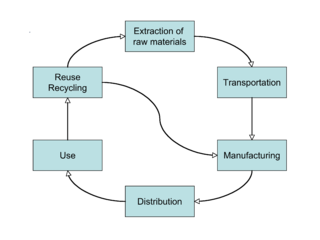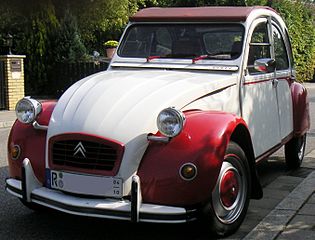‘Cradle-to-cradle (C2C) shows some undesirable developments, in particular in the process of awarding certificates. C2C has become a business model, and the famous certificate promotes recycling and therefore discarding of products. Let us prefer products that last instead, products that we can repair and with which we can have an enduring relationship.’ Says Frans de la Haye, an industrial designer, in a speech delivered at the Dutch Design Week in Eindhoven. A new light on the circular economy.

Frans de la Haye calls himself an industrial designer of the second generation. He was educated in an era, just before the Club of Rome report, when resource depletion was not yet an issue. But after that, he has a lifelong background of industrial design on the basis of the idea that we should change our ways. We should not orient ourselves towards recyclability of products, to which the Cradle-to-cradle philosophy boils down – ‘ultimately, we can recycle everything,’ he says – but towards the design phase. And that should concentrate on the optimal life span.
The price of the C2C certificate
‘In many ways, Cradle-to-cradle had a beneficial effect, in particular in raising awareness,’ says Frans de la Haye in his speech at the Louis Kalff Institute at the occasion of the Dutch Design Week. (link) ‘But there is something essentially wrong with the concept, or it has developed in this way over time. C2C does not induce the company to adopt another business model, but it has become a famous brand itself: sell more and sell faster. Marketers regard it as a ‘tool in the marketing mix’. C2C turns a blind eye on the energy chain and materials use, and it does not take into account the optimal life span of a product.’
‘In other words, the C2C certificate has become a product by itself,’ says Frans. And an expensive product, too. ‘In fact, the highest certificate is unattainable by the demands set by it, and the costs it incurs. Certificates are indeed a marketing tool. Companies that have them, show their intent. But many companies complain about their costs, in particular SMEs. And that is going to be problematic, as some official bodies want to show their environmental attitude by requiring a C2C certificate for procurement. In many instances, small companies cannot comply with that requirement.’

Towards a long-lasting friendship
Fostering relationships should become the standard. Among producers and consumers, by maintenance, repair and updates of products bought in the past. And among producers and designers, by design, production and marketing of products with a long life span, also known as ‘products that last’. Often, cars deserve that name.
Acquiring an optimally designed product that lasts is like the start of a long-lasting friendship between producer and user. ‘Potentially, the energy and materials efficiency of products that last are much better than those of products designed solely with C2C in mind.’ Says Frans de la Haye. He likes the challenge of designing a product in such a way that technical and stylistic ageing will be in balance. ‘If products do not have such a balance, longevity will be an illusion.’ As Frans stated in his speech: ‘Prolonging the technical life span of a product rests on an analysis of its vulnerability, and on designing for reparability or replacement of the parts most likely to wear down.’
Do not merely close the chain, but slow it down as well
Decisions on this optimal life span still require a lot of research. Delft Technical University has embarked upon precisely such research in a three year project ‘Products That Last’, funded by the Dutch ministry of Economic Affairs. Marcel den Hollander, who investigates this subject together with Conny Bakker, is critical on C2C. ‘Although our project has its roots in the C2C philosophy, Products That Last differs from it in an important respect. C2C fits nicely into the concept of planned obsolescence, a model embraced wholeheartedly by the business community to fuel its own motor.’ Yet the C2C closed loops do combine very well with extension of the lifetime of products, and both models could play an important part in shaping thoughts on the circular economy. It is important to realise that Products That Last bring something extra, i.e. the slowing down of the production and recycling loop.’
Technical materials cannot be recycled indefinitely and without losses, and energy is not available in unlimited quantities. Therefore, we should stop ‘going on to develop and produce disposable articles with a short life span in a happy-go-lucky way,’ says Marcel den Hollander. Nevertheless, designing for longevity will not always be easy, there are no standard solutions. Because of differences in user’s contexts, waste reclamation infrastructure, technological developments, regulation, business models and many more factors like drawing up LCAs, the design of new products will always be a tailor-made process in a specific context.
www.productsthatlast.org
www.delahayedesign.com
